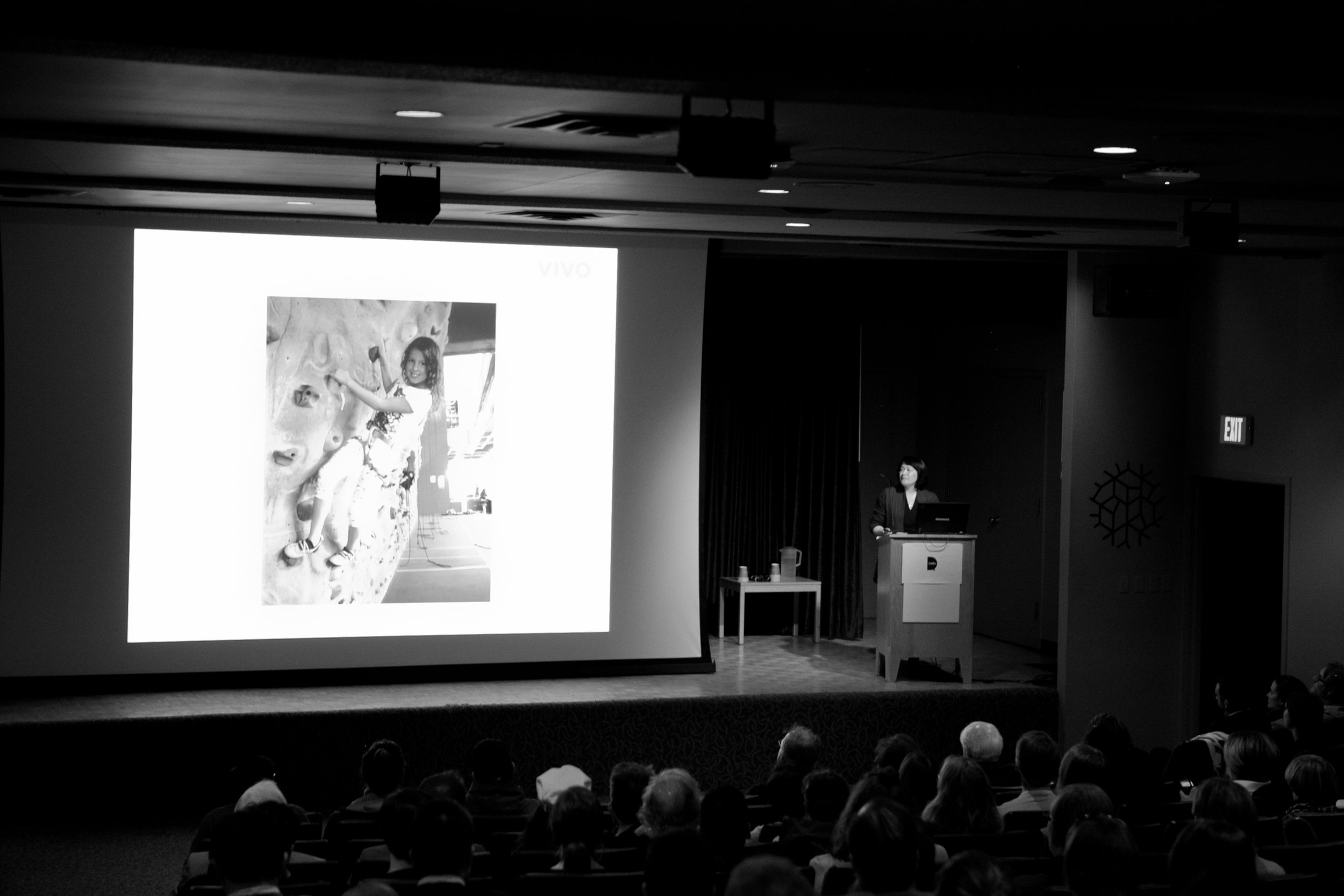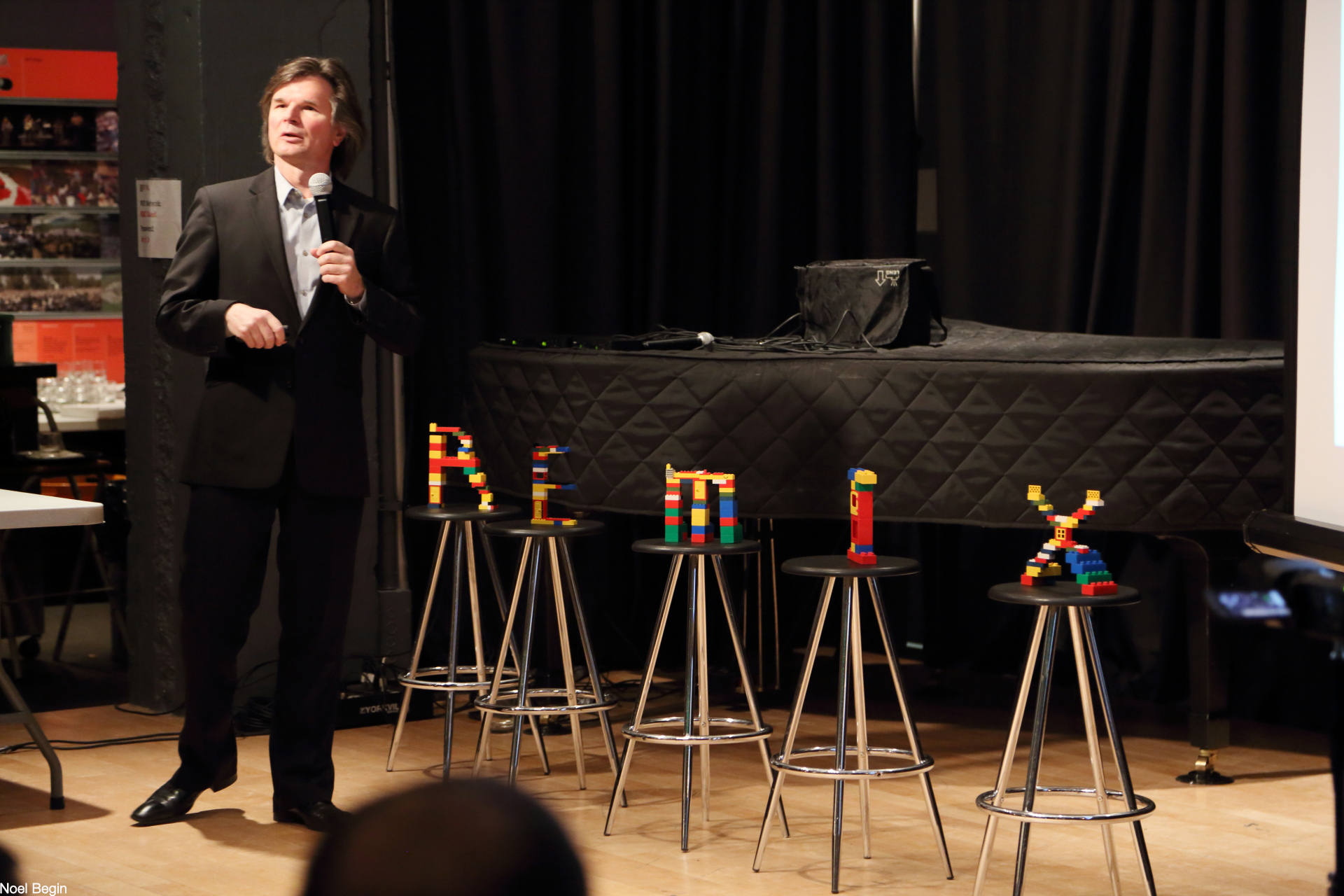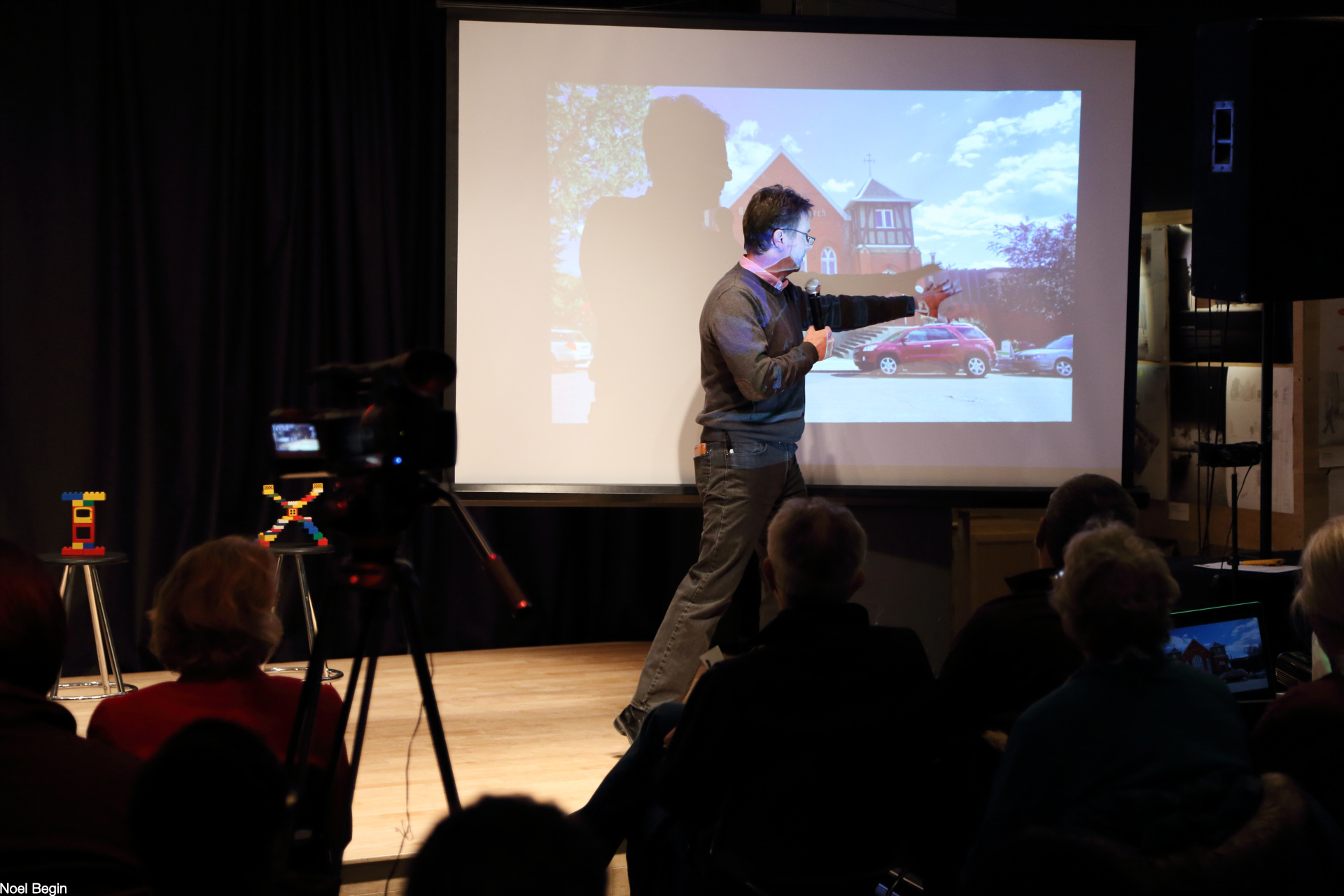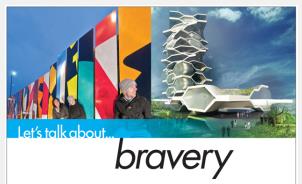Event Location:
The Scandinavian Centre is a mid-century Modernist building in Calgary’s Mount Pleasant neighbourhood. Completed in 1960, it was designed by Joseph K. English, and features an angular, articulated roof on the corner lot. From the interior, the dramatic rise of the wood-panelled ceiling arch is an expressive gesture that gives the hall a sense of warmth. J.K. English studied architecture at the University of Manitoba and established a practice in Alberta in the 1950s. His other buildings include churches in Edmonton and Calgary, a County Office in Didsbury and a ski lodge in Kananaskis.
VIDEO: J. K. English Architecture Project
Panelists:
Alison Karim-McSwiney is the Executive Director of the International Avenue BRZ and behind the business district’s vision for a transit, pedestrian and bicycle-friendly corridor along a major strip of retail and food businesses along 17 Avenue SE. This Transitway Project started in 2004 with Charrettes designed by University of Calgary EVDS students. The early Charrettes were recognized with a Congress of New Urbanism Charter Award. The project’s evolution has included pop-up street activation with benches and tree planting, a Corridor Study, an Arts Space, and finally, an approved plan for a rapid bus line along International Avenue.
Antonio Gómez-Palacio is a founding partner of DIALOG and committed to creating healthy places, where people thrive – through dialogue. Trained as an architect and an urban planner, Antonio’s work is characterized by an engaging and collaborative process, which delivers healthier, flourishing, complete communities. Integrating community wellbeing as part of a city-building conversation has become a hallmark of Antonio’s projects. In the last few years, on the higher-order transit agenda alone, Antonio has led the planning frameworks for LRT projects in Mississauga, Brampton, Edmonton, and Hamilton.
Fabiola MacIntyre is the driving force behind Calgary’s largest infrastructure project, the Green Line LRT—building the foundation for the future of Calgary. Fabiola started as a structural engineer in the consulting industry and then moved to the City of Calgary in 2008 as a project manager for Transportation Infrastructure.
Josh White is the General Manager of Development for Dream Unlimited, where he manages the planning and approvals process for Calgary Lands. Dream is one of Canada’s leading real estate companies, with approximately $14 billion of assets under management in North America and Europe. Previously Josh worked as Senior Policy Advisor for Mayor Naheed Nenshi from 2010-2015, where he participated in programs as the RouteAhead 30 Year Strategic Plan for Transit in Calgary, the Transforming Planning Program, and the Growth Management Framework.
Moderator: Todd Hirsch joined ATB Financial in May 2007 as its Chief Economist. As the bank’s top economic expert, he tracks and analyzes developments in Alberta’s and North America’s economy. Todd spends most of his time crisscrossing the province, sharing these economic insights at over 150 presentations a year. Todd provides economic commentary for CBC, CTV, The Globe and Mail, The Business News Network and the BBC and other local, national and international news outlets. In 2011, he was recognized as one of Alberta’s 50 Most Influential People by Alberta Venture magazine.
Event Summary:
When talking about connectivity, we must ask: connected to what? And to whom? The discussion explored where and how transit fits into our communities. When you get off the bus or the train, what do you want to do and where do you want to be?
Citizen engagement and how to manage competing views to challenges was questioned, resulting in a discussion on seeking the consensus and status quo. However, to actually advance the conversation, we need to push the envelope, says Gomez Palacio, we need to have conversations that embrace complexity, where everyone learns something.
A discussion on the role of planning and how to respond to the challenges of anticipating the future ensued. For instance, what happens to public transit when autonomous vehicles emerge? Asked how to respond to criticisms of the Green Line possibly being a 20th Century system and the question of actually how much transit will be needed in the future, the panelists explored the ideas behind a bigger solution, one that includes many choices for accessibility and mobility. One observation was that when managing the traffic of numerous autonomous vehicles, some are starting to think about grouping the vehicles and even taking them underground. Might that sound a bit like transit, one asked?
Community wellbeing was a large part of the discussion. How do we create destinations that connect people? One of the points made was that the diversity of voices matters. Who participates, who owns the idea, who stewards it along, this is vital. Individuals and community members—it is they who embody the future of the idea and allow it to take form.
Continuing the Conversation:
This event will hopefully seed more discussion around the complex and integrated role of transit and placemaking. If you like what you heard, we encourage you to get involved in your community association to make a difference in your neighbourhood.
The book we recommend (and that we gave to the panelists) is: Traffic by Paul Josephson. You can find it on the d.talks shelf at Shelf Life Books.
Event Supporters:
The Alberta Chapter of the Royal Architectural Institute of Canada
And powered by some extra special in-kind help from:
The City of Calgary (including the very special @calgarytransit bus “to and from” the event)
Evolution AV
Shelf Life Books
Little Rock Printing
Brewsters
Vine Arts
Caffe Rosso
Sidewalk Citizen
Thanks to our amazing volunteers.
And thanks to our members whose individual support keep our programming moving along. A special thanks to Frank Architecture, Hindle Architects, Nyhoff Architecture, and HOK for their continued support.
























































































